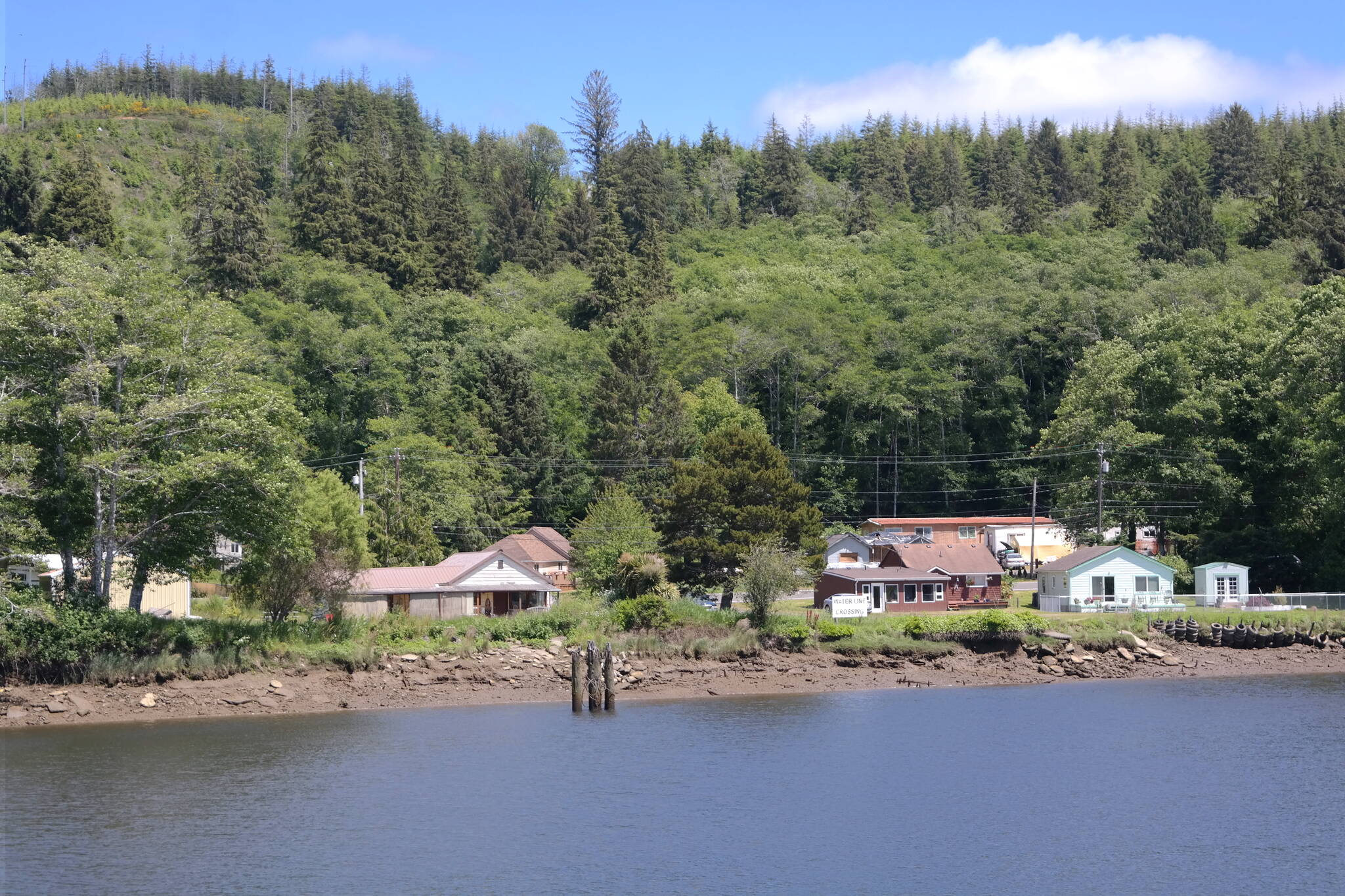Plans for the North Shore Levee – West Segment project are beginning to take a more tangible form. The west segment, which is one of two levees comprising the Aberdeen-Hoquiam Flood Protection Project, will be 4.7 miles long and protect properties along the Hoquiam River from severe flooding.
West Hoquiam will be protected by a variety of different mitigation components, including high ground, levees, flood walls and raised roadways.
The West Segment is estimated to cost $40 million to construct. The city of Hoquiam is currently going through the process to be officially awarded a $34.65 million Building Resilient Infrastructure and Communities (BRIC) grant from the Federal Emergency Management Agency (FEMA).
Part of that process includes a public scoping open house, which was held at Hoquiam City Hall on Wednesday, June 23. The open house provided the opportunity for community members to learn more about project plans and share comments, while also checking off a necessary step in the FEMA grant obligation process.
“It’s great, the turnout has been even better than I expected,” said Hoquiam City Administrator Brian Shay. “It shows that people are really interested in the flood levees, because they’re so glad that they’re finally coming to fruition.”
According to Shay, Hoquiam is likely to formally receive the BRIC grant by spring 2023. The city of Aberdeen is also likely to learn next month if its approximately $50 million BRIC grant application has been selected for further review. If FEMA obligates funds for both grants, 70 percent of estimated costs for the entire flood protection project will be covered.
In addition to elucidating the FEMA grant process, Wednesday’s scoping meeting provided the public with the opportunity to to view and ask questions about the proposed alignment, which has changed over the past two years.
According to David Cline of HDR Inc., the engineering consultants now responsible for the final design of both levees, a combination of adjusted flooding models and a lack of acquiescence by some property owners has caused the alignment model to shift.
“There’s been half a dozen updates in the alignment and changes in the elevation,” he said. “We’re starting to get to a point where we’re in agreement with FEMA on the elevation.”
For the simplicity of right-of-way purposes, the new levee will largely follow the existing levee. According to Cline, if there’s an existing levee out there, its elevation is likely at about 12 feet. Schematics for the earthen levee are looking to place the new levee at 16 feet.
This raised elevation will help protect against the increased flooding along the river, which has been impacted by heavier storm surges and higher king tides over recent years. The model will include a freeboard, or a contingency factor that provides an extra 2 feet of flood protection over the Base Flood Elevation.
“We picked something that we felt was slightly higher and a little bit more conservative than we need to have for some wiggle room,” said Cline.
Excluding major impacts to the river, such as dredging, FEMA hydrology maps are updated every 10 to 20 years. The additional elevation on the new levee should provide sustainability to the project and account for shifting environmental factors due to climate change.
Other components of the project include floodwalls and floodgates, but the specifics of those plans have yet to be determined. While HDR has a proposal on general alignment, according to Cline, applying the schematics to different areas along the map will essentially need to be done “parcel-by-parcel.”
Citizens are encouraged to submit comments for environmental review. The city of Hoquiam, FEMA and HDR will then respond to the comments and the design will be adjusted when appropriate.
“What comes out of this process will probably influence our design a little based on what FEMA wants to address, and then on the Corps (Army Corps of Engineers) permits, which will take a while,” said Lisa Danielski, who handles the complex permitting process on the HDR team.
The 45-day comment period is open from June 8-July 22. Comments can be submitted through the comment form at the virtual open house at https://gather.cdmsmith.com/v/35ze4O451An or via email/mail to FEMA.


